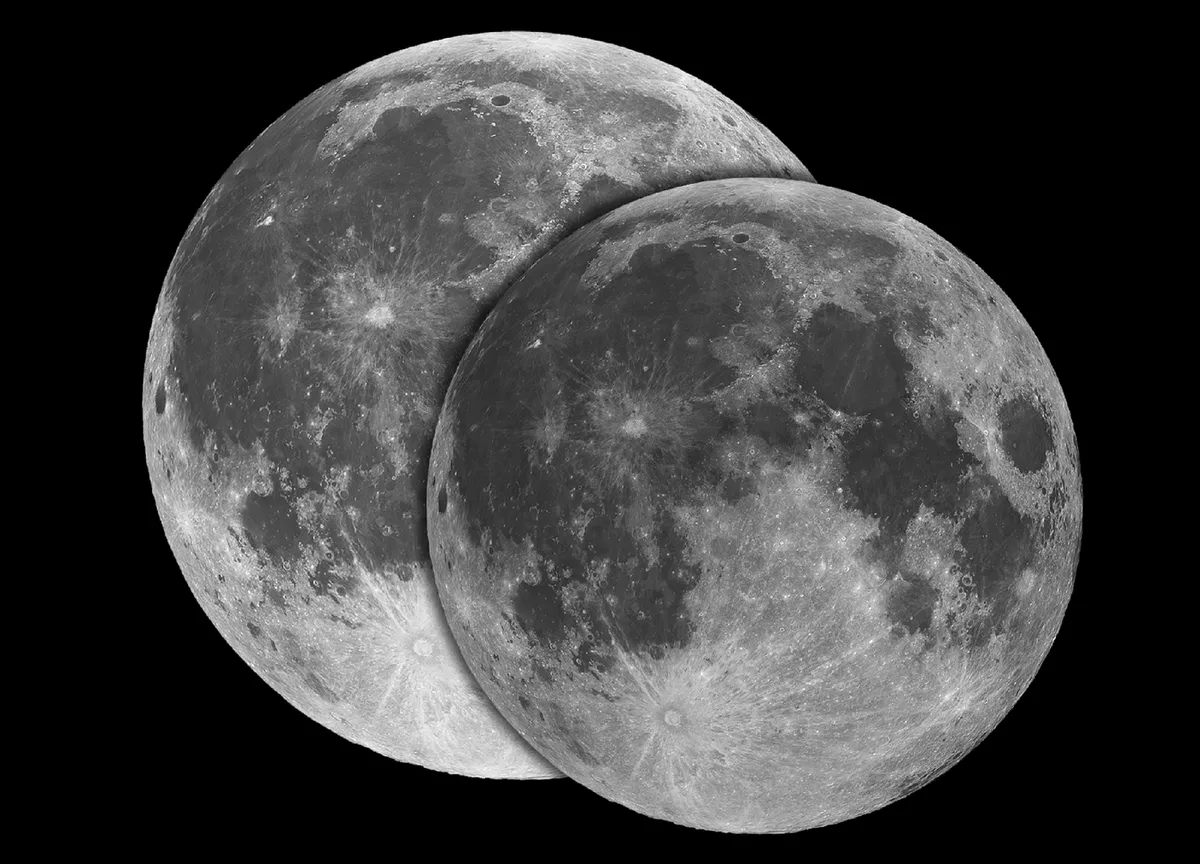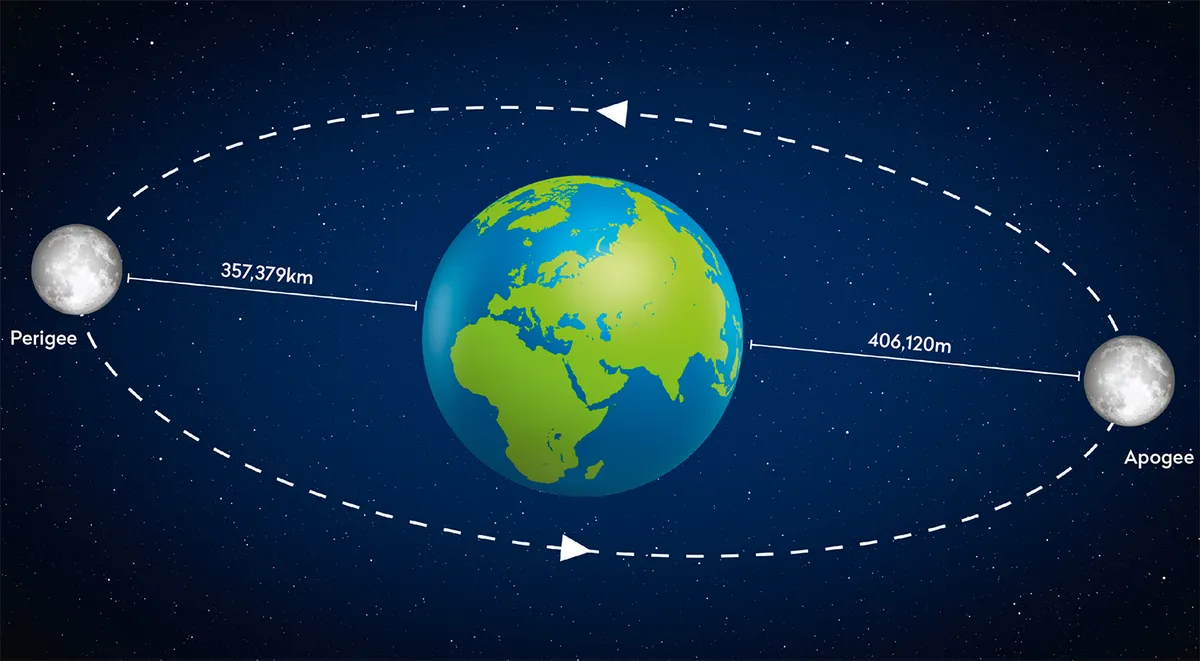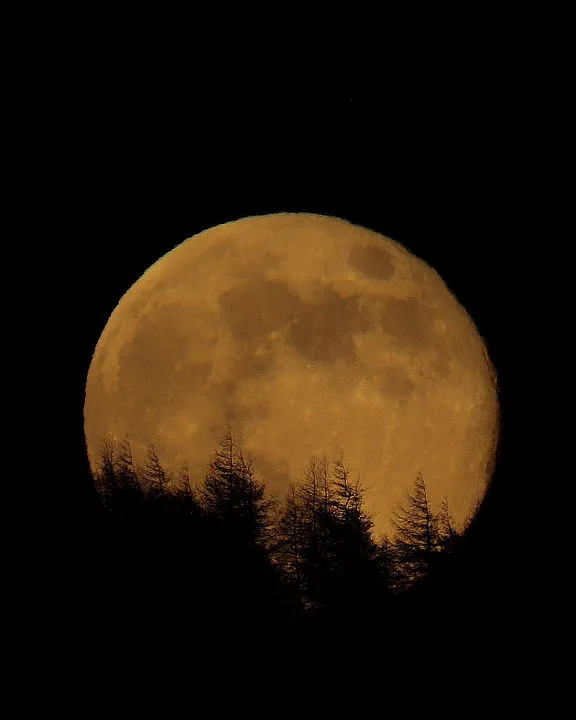It's been a great month for looking up at the night sky and observing some of the most wonderful celestial spectacles the Universe has to throw at us.
October 2024 saw yet another amazing aurora display, and Comet C/2023 A3 at its best, but if you've missed both of these events, fear not, because tonight and tomorrow night you'll be able to gaze up at the Super Hunter's Moon.
The 17 October full Moon will be this year's Hunter's Moon and the biggest supermoon of the year.
What's more, on 19 October the just-past-full Moon will meet the beautiful Pleiades star cluster in the evening sky
Let's take a look at what these terms mean and how to make the most of the event.
Find out when the next full Moon is occurring and sign up to the BBC Sky at Night Magazine e-newsletter for weekly Moon phases and times delivered directly to your inbox.

2024's biggest supermoon
The full Moon on 17 October technically becomes 'full' at 12:26 BST (11:26 UT), just 10 hours and 40 minutes after lunar perigee.
This makes it a perigee full Moon, popularly known as a supermoon.
Perigee is the point in the Moon's orbit around Earth when it's closest to our planet.
The Moon doesn't orbit Earth in a perfect circle: instead it has an elliptical, slightly egg-shaped orbit, so at times it's closer to Earth than at other times.
While many seasoned astronomers prefer to use the term 'perigee full Moon' as a more accurate description of what's going on, the term 'supermoon' nevertheless is a popular term for describing this event.
There are four so-called supermoons in 2024, and the 17 October full Moon is the second.
But why is the 17 October full Moon the 'biggest' of the year? It's because it's the closest full Moon to Earth in 2024.

The Super Hunter's Moon – as it's being called – will be 357,364km (222,056 miles) from Earth.
We got this info from astropixels.com, which is a fantastic astronomical resource hosted by 'Mr Eclipse' Fred Espenak, and tells you all the info you need to know about upcoming full Moons and supermoons.
The average lunar apogee – when the Moon is furthest from Earth in its orbit – is about 405,500km (253,000 miles), so you can see why a supermoon might appear larger in the sky.
But will the biggest supermoon of 2024 really seem spectacularly enormous?

In truth, the answer is unfortunately 'no'.
The difference in the size of the full Moon from one month to the next is imperceptible to the human eye, so you won't notice that the Moon appears unusually big.
The best way of illustrating the difference is to photograph each full Moon – or even each supermoon – of the year and produce a composite image showing the relative difference in sizes.
You can see this in the image below; a composite made by astrophotographer Soumyadeep Mukherjee showing the comparative sizes of 2023's four supermoons.

The one time you may perceive the full Moon – supermoon or not – as being extraordinarily huge, is when it's close to the horizon.
This is an effect known as the 'Moon illusion', and no-one is quite sure exactly what causes it.
But observe the 17 October 2024 Super Hunter's Moon as it's just rising above the horizon, and it should appear larger than usual.
And regardless of whether or not the 'supermoon' is an over-hyped concept, the truth is that a full Moon is a spectacular sight, and certainly not something to be taken for granted.
Armed with knowledge of the science behind what's really going on, you can perhaps appreciate the 17 October supermoon a little more, and even elucidate for your fellow moongazers!

Super Hunter's Moon
So we've explained the 'super' part of the 17 October Super Hunter's Moon, but what's the 'hunter' bit about?
This is much easier to explain: it's simply that each full Moon of the year has been given an informal nickname, most of which describe what's happening in nature at that time of year.
So you'll hear the terms Wolf Moon, Snow Moon, Worm Moon or Flower Moon because these have some connection to the natural cycle of the months and seasons during which they appear.
The names have no bearing on what that Moon will look like, or whether they will appear any differently to any other full Moon.
A Hunter's Moon is the full Moon at the time of year when hunters would traditionally be active.
The bright October full Moon provides light so hunters can see their prey, which will be fattened due to feeding in preparation for winter hibernation.
And hunters themselves will be on the lookout for large prey to take home and provide sustenance over the cold months ahead.

The Moon meets the Pleiades
Arguably a more interesting sight than the Super Hunter's Moon itself, is two nights later on 19 October when the Moon will drift through the southern portion of the Pleiades star cluster.
The Pleiades is a spectacular open star cluster clearly visible with the naked eye, and looks amazing through binoculars.
It appears as a sort of mini 'plough' shape and glows a beautiful blue colour.
While the two objects are nowhere near each other in terms of their actual distance, from Earth we often see the Moon close to the Pleiades because of their orientation in the sky.
On 19 October 2024 you'll see just that, the Moon passing close beneath the Pleiades, making for a wonderful spectacle.
That bright Moon will likely wash out the stars of the Pleiades when seen with the naked eye, but a pair of binoculars or a small telescope should show you how the lunar disc obscures then reveals the cluster's individual stars.
If you observe or photograph the October 17 Hunter's Moon supermoon, share your images and observations with us by emailing contactus@skyatnightmagazine.com
